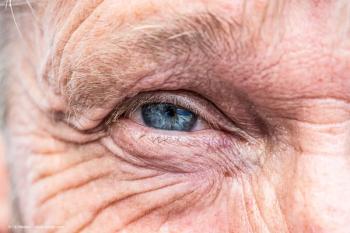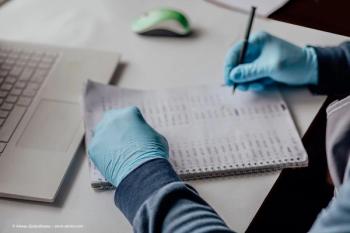
Q&A: Jennifer I. Lim, MD, shares insights from the DAVIO-2 study
The DAVIO-2 study reveals EYP-1901's potential as a 6-month treatment for neovascular AMD, matching aflibercept's vision outcomes with fewer doses.
At the ASRS 2025 meeting, Jennifer I. Lim, MD, presented on the DAVIO-2 study comparing EYP-1901 with aflibercept for patients with neovascular AMD. She shared with Modern Retina that the noninferiority trial showed that a single dose of EYP-1901 provided comparable vision results to repeated aflibercept treatments. The therapeutic candidate demonstrated a unique bioerodible, sustained-release mechanism potentially allowing 6-month dosing. Participants were high-need patients with extensive prior treatment, and the ongoing phase 3 study aims to further validate these promising initial findings.
Note: The following transcript has been lightly edited for clarity.
Modern Retina: Can you share a few highlights from your presentation at the 2025 ASRS meeting in Long Beach, California?
Jennifer I. Lim, MD: The DAVIO-2 study was a noninferiority study that compared EYP-1901 to aflibercept. Basically, it compared 1 dose of either low-dose EYP-1901, which is 2 mg, or high-dose EYP-1901, which is a 3-mg dose, to aflibercept, given every 8 weeks. These were the 3 arms of the study, and they were given in a randomized fashion, after 3 loading doses of aflibercept were given. During this study, which took 1 year, patients were allowed supplemental aflibercept based on prespecified criteria.
Now, the primary end point was an average of weeks 28 and 32 best-corrected visual acuity for each of the arms. And basically, what was found was that despite the fact that only 1 dose of EYP-1901 was given, those arms had noninferior vision, as compared to the aflibercept arms, which received aflibercept every 8 weeks.
MR: How might this study inform future research?
Lim: This is a really interesting study, I think, because it helps frame the treatment algorithm for the future, phase 3, which is actually ongoing right now and fully enrolled. So we're waiting to see what happens. Because of what we saw in the phase 2 studies, in phase 3, patients are dosed every 6 months, because this drug can last for 6 months. It's bioerodible. It's nonpegylated, and actually it results, actually, in a sustained release over the 6 months, which is also zero-order kinetics, and it's a very continuous dose. And I think it gives our patients another treatment option, in the future, that will prevent [these patients from having to have] redosing.
MR: Were the patients in this study previously treated?
Lim: The patients who were included in DAVIO-2 were patients who were previously treated for their neovascular AMD, and in fact, on average, they had had 10 prior anti-VEGF injections in the year prior to the enrollment. So these were high-needs patients.
Newsletter
Keep your retina practice on the forefront—subscribe for expert analysis and emerging trends in retinal disease management.
















































